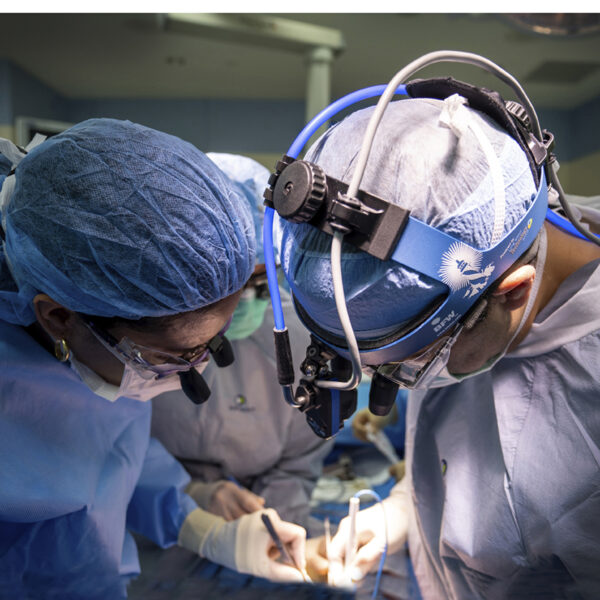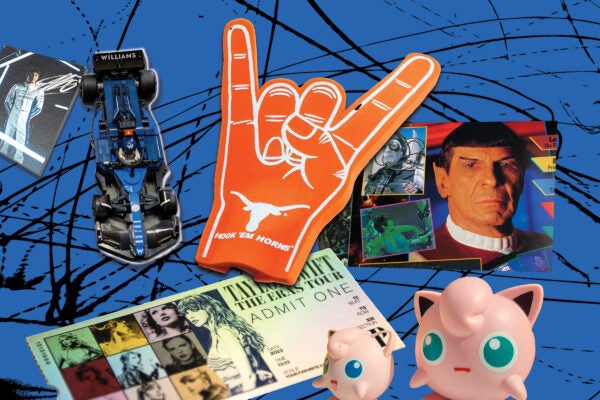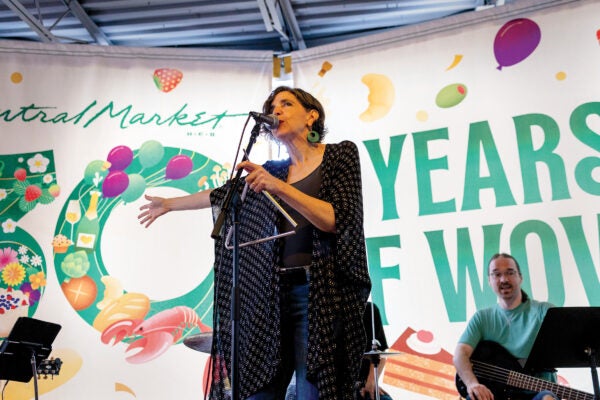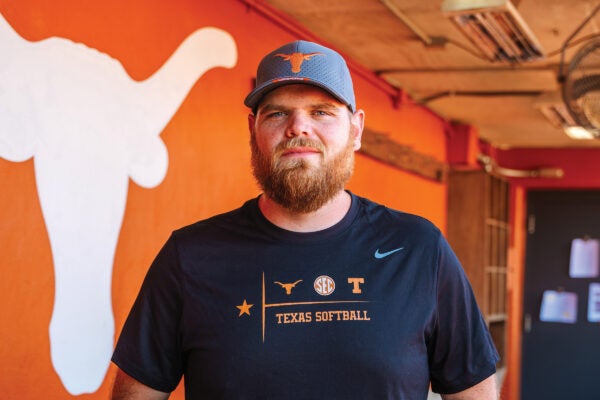Heart surgeons are experts on our most valuable organ. They know its chambers and arteries the way a mechanic knows an engine. And yet surgical interventions such as transplants — sewing once beating hearts inside unfamiliar rib cages — can be as fascinating and fearsome to surgeons as they are to the rest of us.
“Surgery is a legalized assault,” says Dr. Charles Fraser Jr., head of the Texas Center for Pediatric and Congenital Heart Disease at Dell Children’s Medical Center of Central Texas. “The premise is: I intrude on your body with something radical — a knife, tube, catheter — to take something out and put something in, repair something, all in the name of making you better. Distilled to its basic elements, the whole concept is radical.”
But the procedures entrusted only to the most punctilious limbs and minds bring a new hope for life to adolescents whose youths were seized by congenital heart defects. Patients wait in cardiac care units, sometimes for months, for the right organ to appear on the donor list.
For years, children in heart failure and in need of a transplant or mechanical assist device had two options for care in the entire state: Texas Children’s Hospital in Houston or Children’s Health in Dallas. In Central Texas, these kids would be flown by helicopter to one of the hospitals — a trip with a low probability of survival for an exhausted organ.
But in 2018, that all changed. The Texas Center for Pediatric and Congenital Heart Disease opened. The center is a partnership between Dell Children’s and UT Health Austin, the clinical practice of Dell Medical School at The University of Texas, and was created by Fraser and his team of hand-picked heart experts.
The first operative milestones came at an incredible speed for the young program. Since it was approved to list patients and perform transplants by the United Network for Organ Sharing in July 2020, the center has completed four heart transplants and implanted three ventricular assist devices, or VADs. Dr. Ziyad Binsalamah, the surgical director of heart transplantation and mechanical circulatory support, estimates they’ll be able to perform five to 10 transplants and assistive device implantations every year for the next three years.
“Everyone here is invested in making this a nationally recognized program, which is really amazing,” he says.
For Binsalamah, Fraser and the entire team, their young, ill patients are what matter most. What follows, the recollection of three milestone procedures and their recipients, are moments of time, precision, dedication and the utmost care for a child to have a normal life.

On Oct. 3, 2020, at 2:45 a.m., two cardiothoracic surgeons and a perfusionist burst from Dell Children’s in an ambulance headed for Austin-Bergstrom International Airport. In the whirring vehicle, a beige Yeti cooler labeled “Human Organ” in red lettering accompanies the medical team responsible for securing a donor’s heart several states away.
Methodical but rushed concentration calms the surgeons and perfusionist as each of their watches gains minutes. Every step of the day’s mission replays in their minds. Today, when they remove a donor’s heart to be placed within an 18-year-old soccer player named Gerardo “Junior” Ramirez Jr., time will be no friend.
The surgeons, Dr. Ziv Beckerman and Dr. Sara Mendoza Crespo, and the perfusionist, Richard Owens, board a six-passenger plane given first priority to take off and land. Upon arrival at the airport, the retrieval team takes a 20-minute ambulance ride to the hospital where the donor is being kept on life support.
While other retrieval teams wait for the donor’s liver and kidney, the Austin heart team is the first to go. Before they remove the heart, its strength is tested and an echocardiogram watches the heart’s function and structure. Confirming they have a strong organ, Owens stops its beating with medication. A piece of lymph node is taken to test for antibodies and put in a small jar.
The second the heart is clamped, the team has six hours to get it back to Austin and into the patient for the best chance of resuscitation. The donor’s heart and lymph node are secured in a bag filled with solution surrounded by ice in the cooler. At 9:20 a.m., the team and its fleshy cargo ride an ambulance to the airport and board the plane for Austin. The clock is ticking.
The Central Texas heart center was carrying on lifesaving work even before Ramirez’s surgery, which was its first transplant. On Sept. 24, 2019, the program implanted its first left VAD, a mechanical device inside the body that helps the heart circulate blood. Ventricle is another word for the pumping chamber of the heart, and the device helps when that pump is failing, Fraser says.
Twelve-year-old Grace Jennings went into cardiac arrest for two hours on Sept. 18, 2019, before a planned surgery to repair her leaking heart valve. In response, Grace was put on an extracorporeal membrane oxygenation machine, or ECMO, to pump blood to her heart and briefly save her life. But ECMOs are only a temporary solution, unless the doctor believes the heart is strong enough to regain function quickly and recover, and one with many complications: bleeding, infection and possible organ failure. The longest a patient can survive on an ECMO is about a month.
Grace ultimately needed a new heart, but the center had not yet been approved for the surgery or to list patients. Instead, Fraser inserted the VAD, another temporary solution but one that would keep her alive until a transplant. Then, on Jan. 26, 2021, now 13-year-old Grace became the second person to receive a heart transplant at Dell Children’s.
Fraser’s expertise draws from his longtime work as a world-renowned pediatric heart surgeon. He previously directed Texas Children’s congenital heart surgery program in Houston and helped build it into one of the largest heart centers in the country.
Midland-raised Fraser graduated from UT in 1980 with a degree in mathematics before attending medical school at the UT Medical Branch at Galveston. He later completed two residencies, surgery and heart surgery, at Johns Hopkins University in Maryland and was a pediatric heart surgery fellow under Dr. Roger Mee, one of the world’s best pediatric heart surgeons, at The Royal Children’s Hospital in Melbourne, Australia — an epiphanous experience, Fraser says.
Always proud of his alma mater, and with four kids who all graduated from UT, Fraser kept connections with the university and got to know former Dean Clay Johnston when the medical school opened. Fraser’s ties to UT, the opportunity to curate the best pediatric heart surgery program in the country and the benefits of being connected to a medical school influenced his decision to head the Central Texas heart center.
But despite all his experience, Fraser, who has participated in more than 18,000 cardiothoracic surgeries in his career, says that each transplant is as intense as his first in an experimental laboratory in 1986.
“You never get used to a heart transplant, and a surgeon should never get used to doing surgery,” Fraser says. “I have colleagues or trainees who will occasionally say something like, ‘Surgery is fun.’ I really bristle at that. Playing tennis is fun. Fishing is fun. Surgery is not fun. It’s very gratifying. It’s gratifying to do an operation and have someone be better. But I think a surgeon that considers doing surgery ‘fun’ is on the border of being dangerous, or is already dangerous, because that indicates a loss of reverence.”
On the morning of Ramirez’s heart transplant, his medical team gathers outside his hospital room at 8 a.m. to prepare for what would be one of the most significant and brutal events of his life. The retrieval team is still on its mission for the young man and in constant contact with the team in Austin by text message.
Ramirez had been in heart failure for nearly a year, and another hospital had rejected him for a transplant. He collapsed on a soccer field in 2017, and doctors discovered that he was born with an abnormal valve and also had Danon disease, which causes a thickening of the heart muscle and put him at risk for sudden cardiac arrest.
Before any operation, the surgical team has a briefing to discuss its strategic plan, and Fraser says surgeons develop a preoperative ritual to get them “in the zone.” Right before Fraser enters the operating room to start surgery, he collects himself during the act of thoroughly scrubbing his hands.

The life expectancy of a transplanted heart is about 15 years. For the parents of kids with heart failure and no permanent solution, the longevity and quality of their child’s life are unfaltering concerns. Fraser is accustomed to answering questions from parents, and as a father and grandfather, he shares their apprehension.
“My basic principle is always to speak to patients and families the way I would want to be spoken to, with objective language,” he says. “I certainly would never want to be guilty of under- or overpromising, and tend to be very blunt about things. If I or we as a body of practitioners don’t know, I tell people this is something we don’t really know what the outcome is going to be. I think that mostly works well for people.”
Even after a successful transplant, patients must continue to take anti-rejection drugs for the rest of their life. Successfully tracking the outcomes of patients’ operations and their quality of life has been a challenge for the medical community, Fraser says, because there is not a clear answer on how to best do so ultimately until death. The heart center wants to know things like how the patients are doing in school, how their developmental milestones are being met, how their intellectual capabilities are progressing, and whether they need remedial operations or ongoing care.
“We are listening to patients and families because historically, the medical community hasn’t been as good as it could have about looking at measures that are actually important to them,” Fraser says. “If you’re facing a life-threatening illness, just surviving is obviously paramount. But beyond that, we would like to think that we’re offering therapies that give people the best possible life. But if you’re not examining that, how do you know? So that’s not so easy, but we’re really expending a lot of effort and interest in that sphere.”
Dr. Carlos Mery, associate section chief of pediatric and congenital heart surgery, is at the heart center to find answers to these problems and build a program that supports families and patients in the long term — something he says the field does not do well. He is one of the center’s six congenital and pediatric surgeons and directs the health transformation and design in congenital heart disease program at Dell Medical. The program examines all clinical research, including outcomes and measurements, to redesign future care for patients.
“In line with the bold vision of the medical school, we’re looking for a program that really puts the patient at the center,” Mery says. “We want to build an infrastructure to support the patients and their families, not only from a medical standpoint, but from a holistic standpoint for their entire life.”
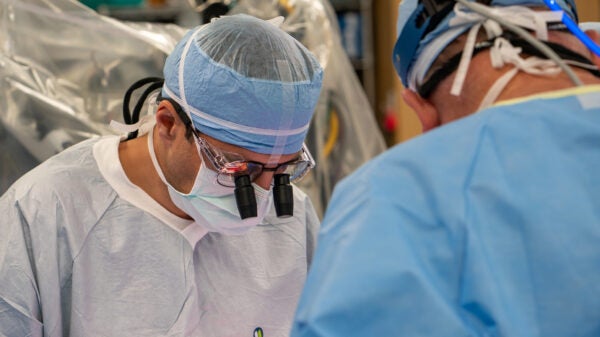
In the operating room, Fraser’s team grows to more than two dozen people. Ramirez’s heart has enlarged to about the size of a basketball, and before placing the donor’s heart in, an hour is needed to exchange native plasma with new plasma to trick his body into not rejecting the foreign organ.
“Younger patients actually seem to do better because their immune systems are less developed, and therefore they have less reaction to a foreign heart or organ,” says Owens, the perfusionist.
At 12:22 p.m., the donor heart lands in Austin, and the retrieval team travels the eight minutes from the airport by helicopter. Cheers greet them on the helipad before they take the stairs to Ramirez’s operating room. They deliver the cooler at 12:32 p.m. — four hours and 15 minutes since removal from the donor — and Fraser has less than two hours to beat the clock.
After removing Ramirez’s heart, Fraser begins sewing in the new one, awakening it with electrical paddles. The new heart starts beating immediately. When the operation team confirms that the heart is moving Ramirez’s blood on its own, he is slowly taken off bypass and his pacemaker is removed. By 4:50 p.m., his chest is closed. The heart was only out of a body for five hours and four minutes.
Ramirez’s recovery from the transplant isn’t easy. The heart has to work harder once anesthesia wears off, and he receives large doses of anti-rejection medication the first few days. He temporarily is put on a ventilator to relieve the new heart and is on dialysis to help his kidneys cope with the drugs. Finally, after 144 days at Dell Children’s, Ramirez is able to go home for Christmas. As he exits the hospital on Dec. 23, wearing a white T-shirt with the words “Heart Failure, VAD, and Transplant Program” on his chest, Ramirez is met with a celebration of cheers, a car parade and first responders.
The center’s first transplant patient is going home, and back to life.
Zaria Grace Jackson was 3 months old when a pediatrician instructed her mother, Olivia Guthrie, to immediately take her to Dell Children’s emergency room on Jan. 8, 2021. The infant wasn’t eating or urinating, and she was constipated and panting. There, doctors discovered her enlarged heart and moved her to the cardiac intensive care unit. The cause of her heart failure is still unknown.
On Jan. 11, Zaria was the first child to receive a Berlin Heart at Dell Children’s before her eventual transplant on March 25. A type of VAD, the Berlin Heart EXCOR is a mechanical pump that sits outside the body and is connected to the heart through two tubes that are sewn into it. In the United States, it is the only FDA-approved VAD for small children because the device’s pumping chambers are outside the body.
Normally adults or an older, larger adolescent such as Grace Jennings could receive an internal VAD, but because Zaria’s chest is so little, such a device would not fit inside. Before the Central Texas heart center opened, she would have been put on an ECMO and transported to Dallas or Houston.
Binsalamah arrived in Austin on Jan. 9 to start at the center, just two days before he and Fraser would attach the Berlin Heart to Zaria’s failing organ. The surgeons had worked together at Texas Children’s since Binsalamah’s arrival in 2014 for fellowship training. Fraser decided to hire him there in 2018, and Binsalamah stayed in Fraser’s place when he left to start the Central Texas heart center.
Before he left Houston on a Saturday morning for Austin, Binsalamah received a call from Beckerman, the surgeon on call at that time, with an update about Zaria’s condition. Beckerman informed him that she was deteriorating and a decision on a VAD implantation was needed immediately.
Binsalamah called Owens, the director of mechanical circulatory support. He previously worked for The Woodlands-based Berlin Heart and arranged for the pump and equipment to be delivered overnight.
“On Sunday morning, I actually went to the hospital,” Binsalamah says. “I looked at Zaria and at the numbers, the echo, chest X-ray. I made the decision to not wait and see if she’s going to recover or not and to proceed with implanting the device on Monday.”
The device arrived Sunday evening, and with their extensive knowledge of the procedure, Binsalamah and Fraser successfully implanted the Berlin Heart.
“Everyone here was supportive, which was really amazing,” Binsalamah says. “Everyone was like, ‘We’ll help you, we’ll let the best personnel be in your operating room, and we want you to feel comfortable.’ Dr. Fraser called me and said, ‘Look, I’m going to scrub in with you, and I’ll help you.’ I said, ‘That’s perfect.’… Everyone was there, everyone wanted the procedure to go well, and the care of the patient to go well. I’m so happy with the progression. She’s now doing what any baby would do right now.”
Because Zaria had a Berlin Heart, she got on the priority list for a transplant. Binsalamah says that most of the time for kids this size, an organ is available three to six months after the implant, but if it took longer and she needed a larger pump, it would only be a five-minute bedside procedure. The girl had the Berlin Heart for 73 days before receiving a new organ. A little over three weeks later, Guthrie took her daughter home on April 19 to be with her three siblings.
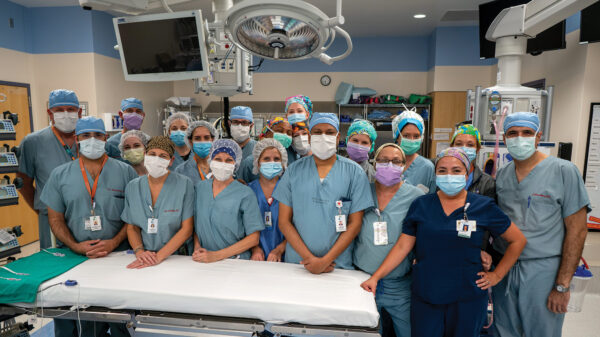
Like all VADs, the Berlin Heart provides more time between heart failure and either heart recovery or a transplant. The average Berlin Heart is in a patient for 188 days, but there are children who have them for longer than a year, Fraser says.
In Europe and Japan, patients can leave the hospital with a Berlin Heart, Binsalamah says. The Food and Drug Administration does not allow patients to go home in the United States because of the medical management needs of the pump and the risks of clots or because of possible bleeding, infection and stroke. The pumps can malfunction and need to be replaced, or the patient can outgrow the model size.
“It is really overwhelming for the parents to take care of the kid with that pump,” Binsalamah says. “They have to look at the pump every day, make sure there are no blood clots and that it’s functioning properly, which is really tough for the parents to do.”
Hurdles like these are why Binsalamah joined the center: to identify the problems, and then create something better.
The center’s connection to a medical school and the entire university community is crucial to its growth. From engineers to social workers, the program has developed collaborations across campus to further its three categories of work: taking care of patients, conducting research and educating students and fellows.
“Our expectation for ourselves, and what is expected of us by The University of Texas, is to create new knowledge and approaches to tackle vexing problems,” Fraser says. “To do that, you have to be in the game. In other words, if you’re taking care of the patients on a day-to-day basis and seeing the different challenges, you’re constantly trying to refine and improve. The academic environment offered by the medical school and the greater University of Texas is almost a boundless environment to go explore and create new things.”
The incredible opportunity for research with UT and Dell Medical influenced the move for Binsalamah, whose focus is improving the use of VADs. He guides biomedical engineers working with prototypes and hopes to ultimately create a new device, especially for infants and toddlers.
“If we’re able to manufacture a device that can be implanted inside a small kid, and then the kid can go home, that would be the ultimate goal,” Binsalamah says. “These devices are not benign. They can have multiple complications, like infection, clotting, bleeding or malfunction. So if we’re able to develop a device that will minimize these side effects, that would be ideal.”
In July, Dell Children’s started delivering babies diagnosed in the womb with a problem, many of which are heart-related, using a new labor team in the Comprehensive Fetal Care Center. Doing deliveries in-house lets doctors provide care quickly rather than having newborns transported in an ambulance and separated from their moms. The most exciting addition on the horizon, though, is that they will soon be able to operate on developing infants still inside their mothers.
Fraser is impatient for the program to keep growing, and he is focused on determining the best way to educate tomorrow’s surgeons. But for him, national rankings are too much like a litmus test, and remaining humble, self-critical and responsive to patients’ and families’ needs are much more important.
“I don’t know how to say this and not sound dramatic, but this is what I was born to do,” Fraser says. “I found my way here. There was no plan to this. Life has engineered me this way. I don’t want to do anything else. When I’m up all night and the families thank me, I’m of course grateful that they thank me, but what I tell them is, ‘This is what we do.’ It’s our privilege.”
